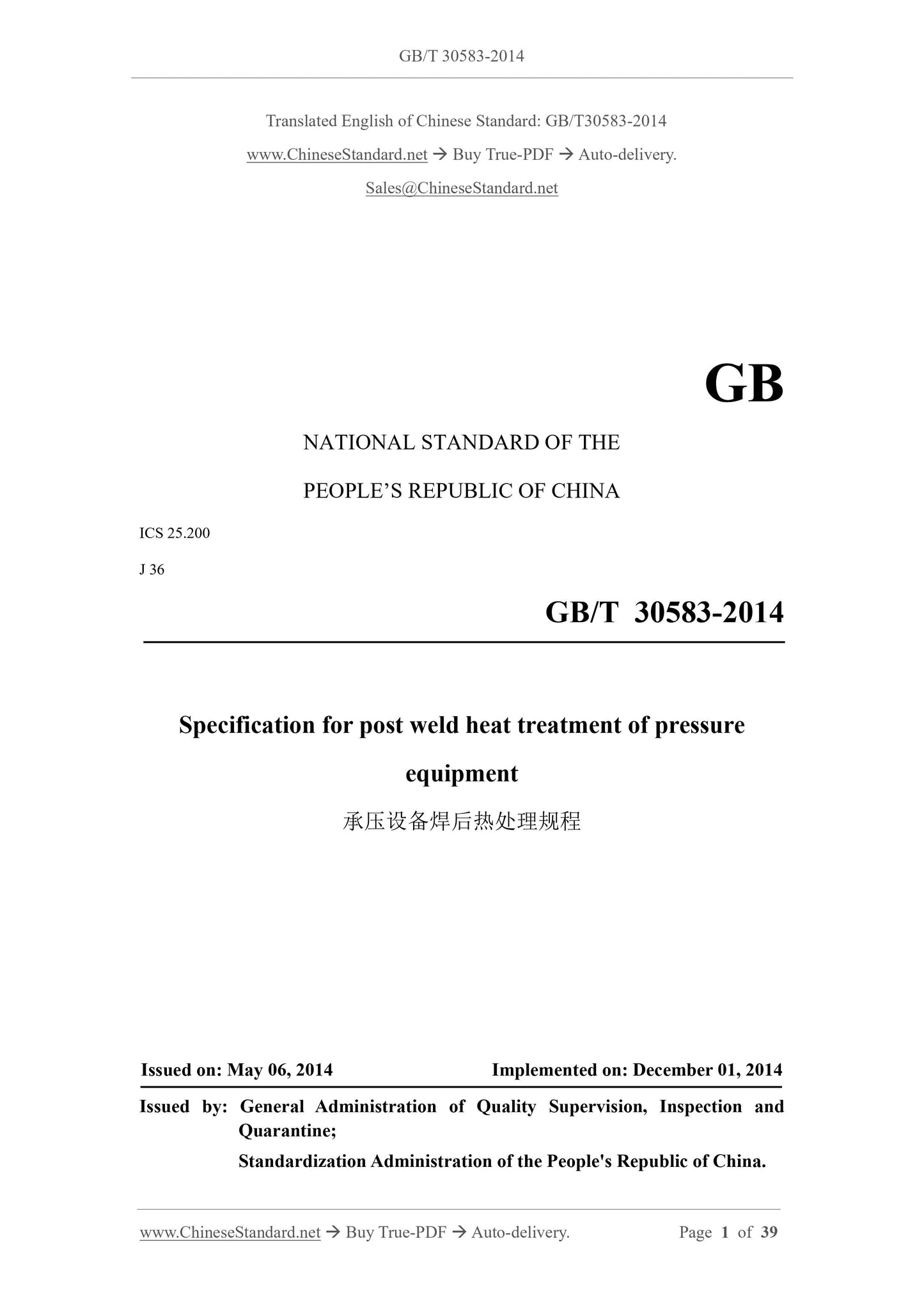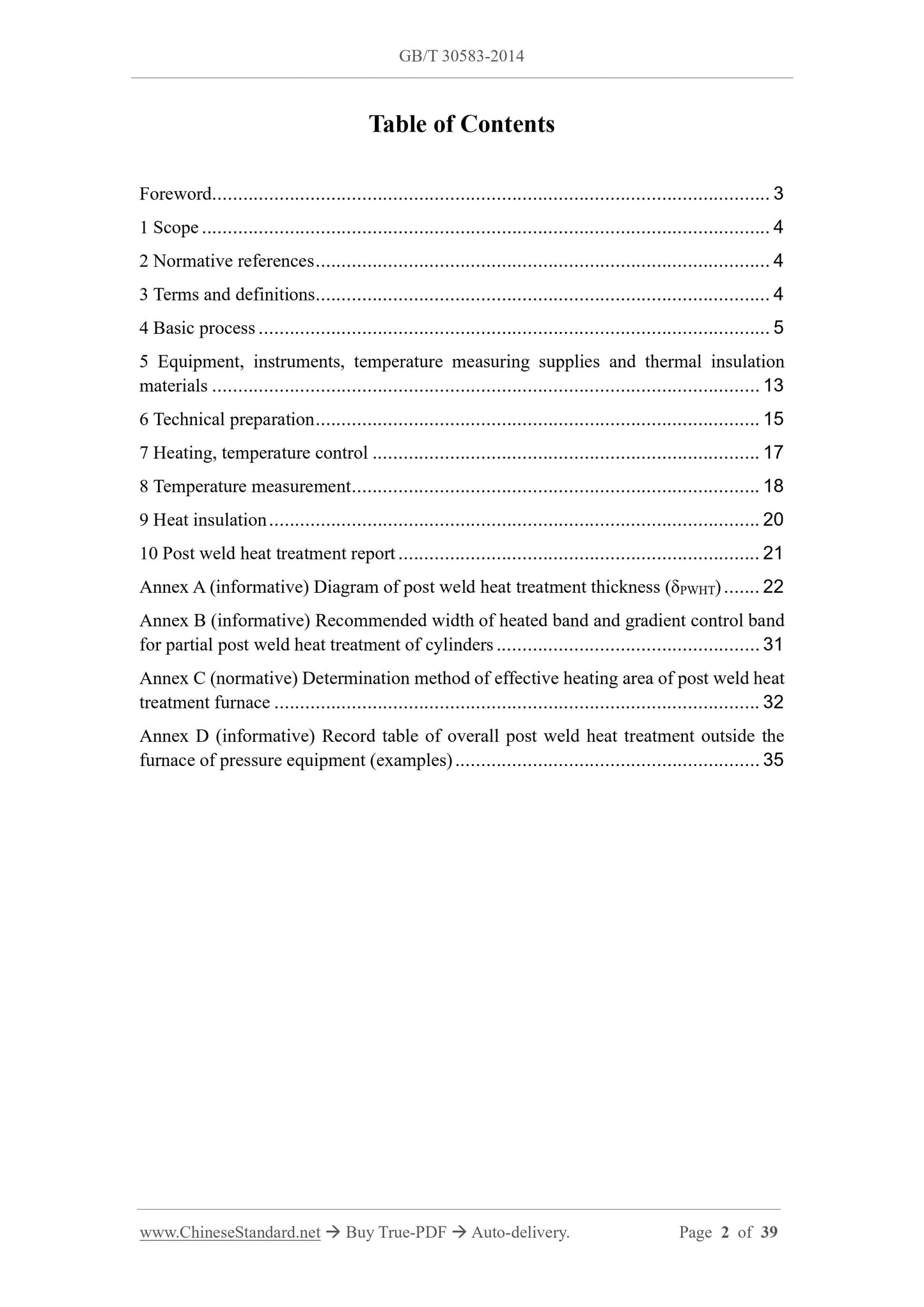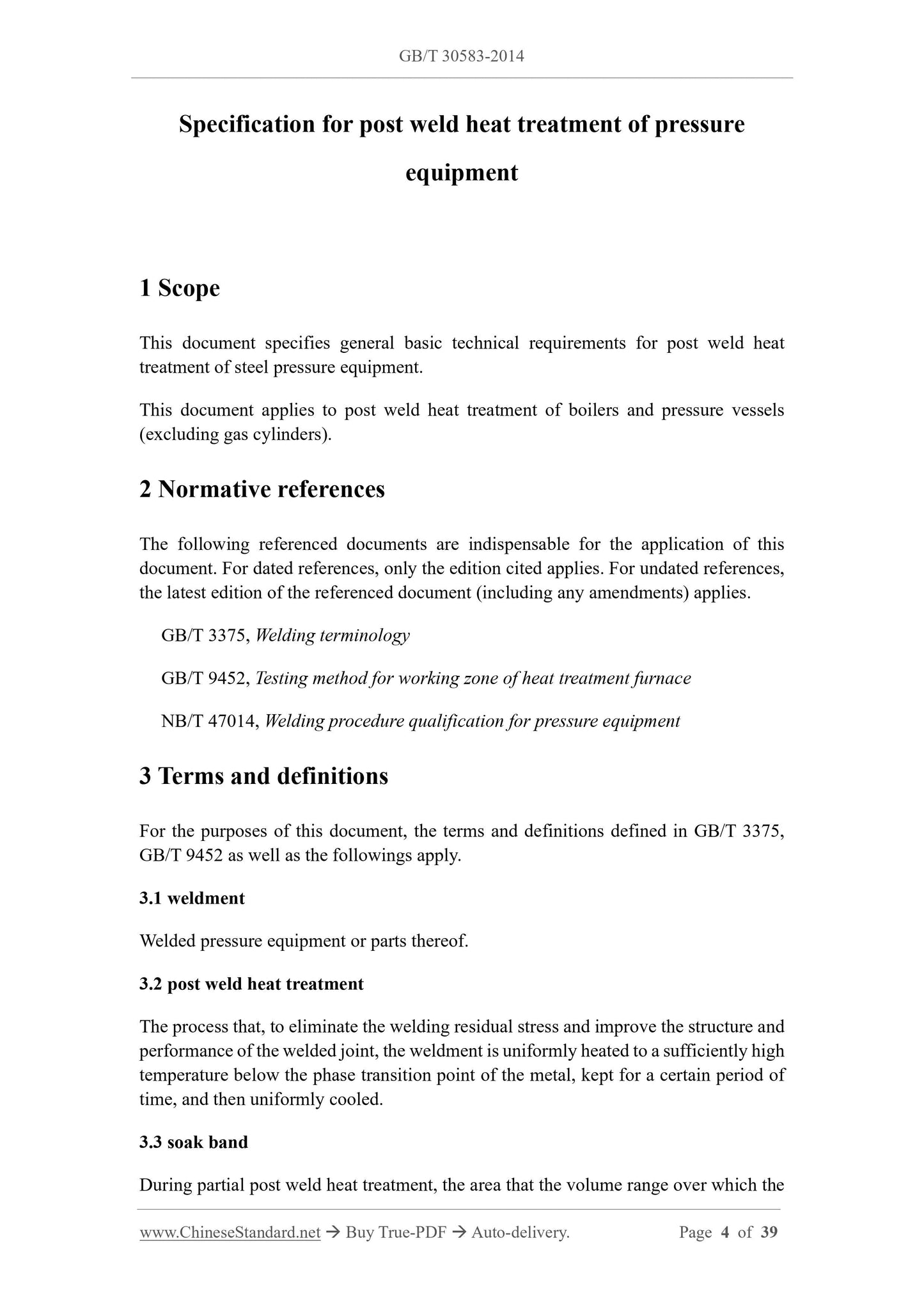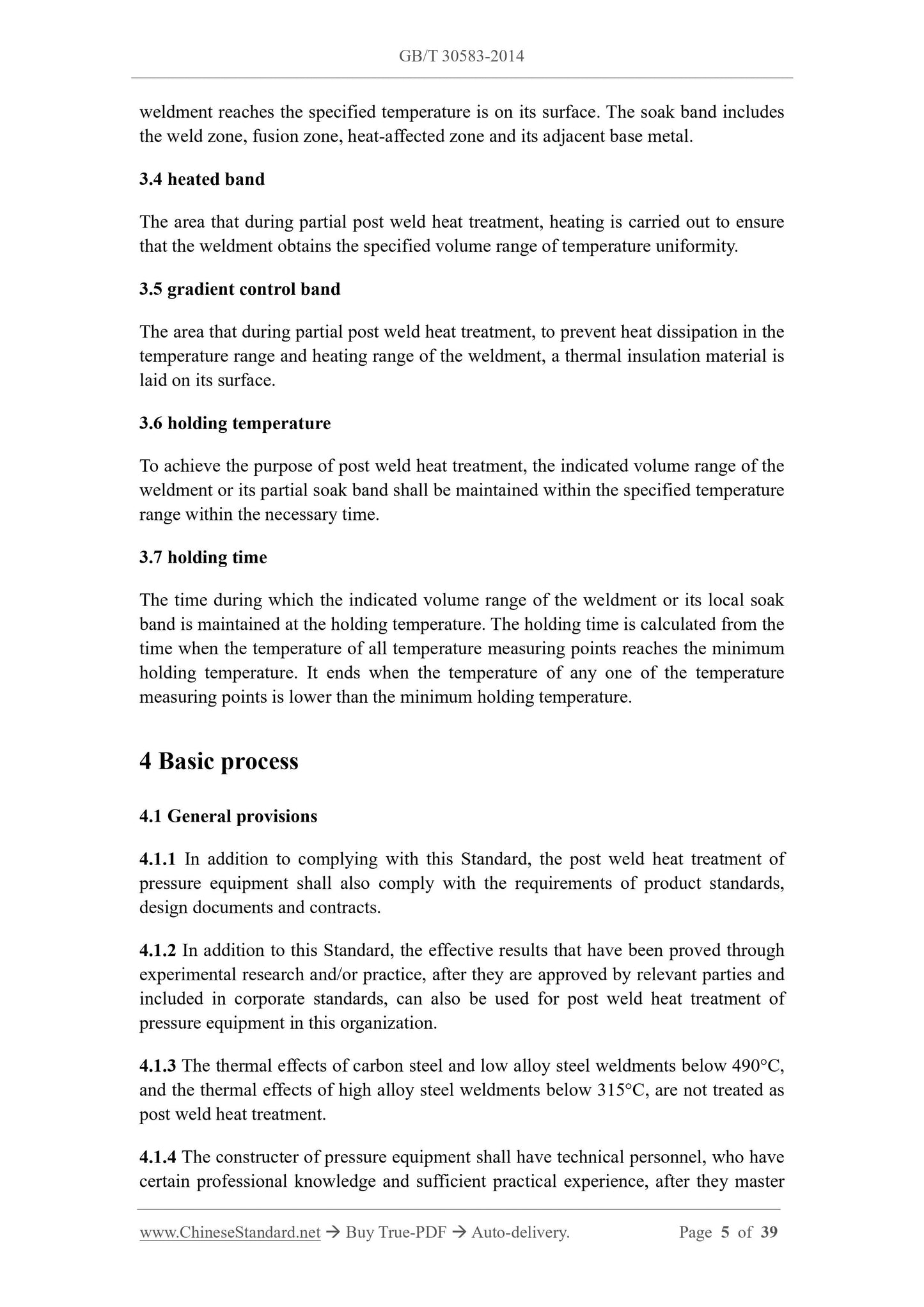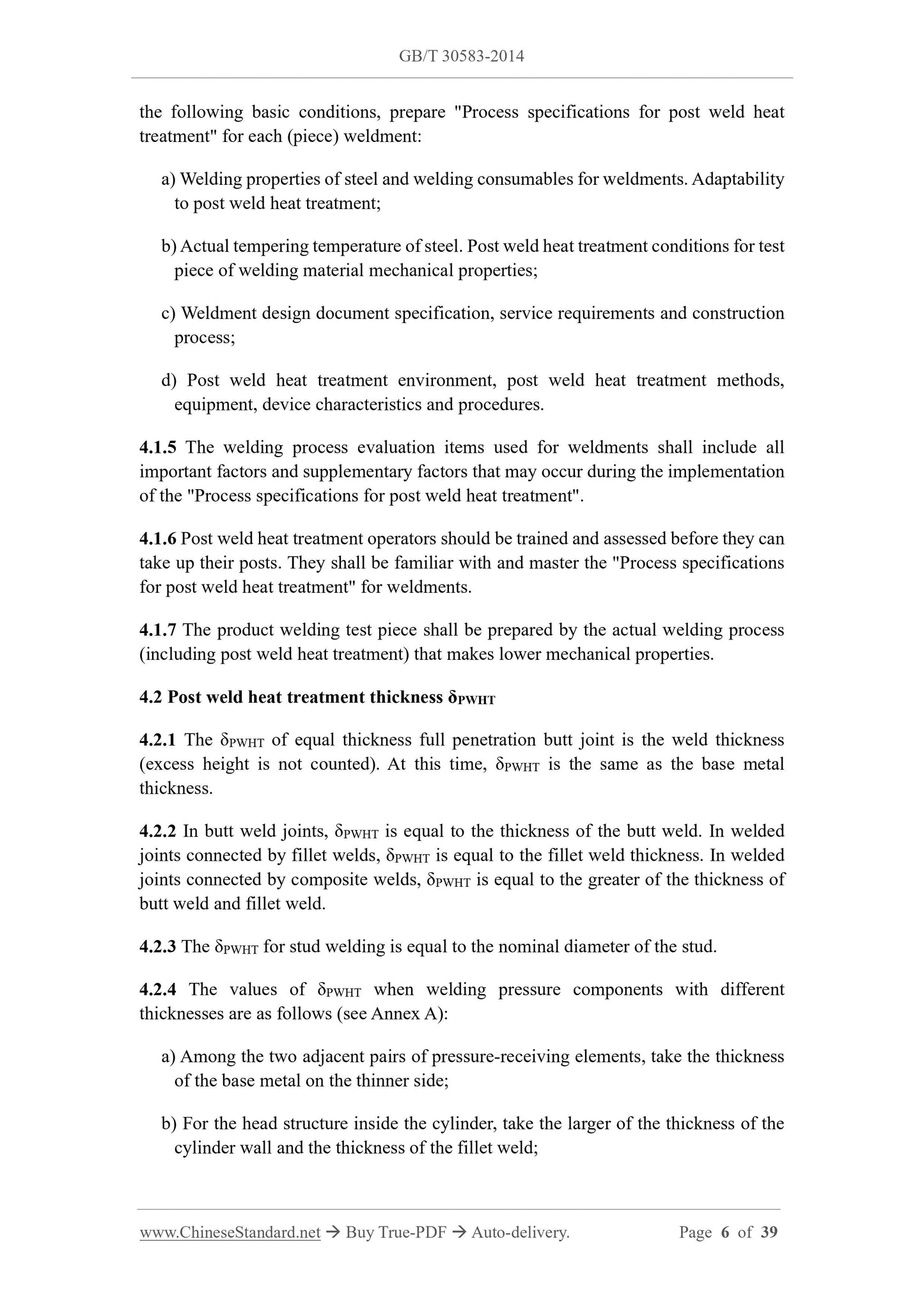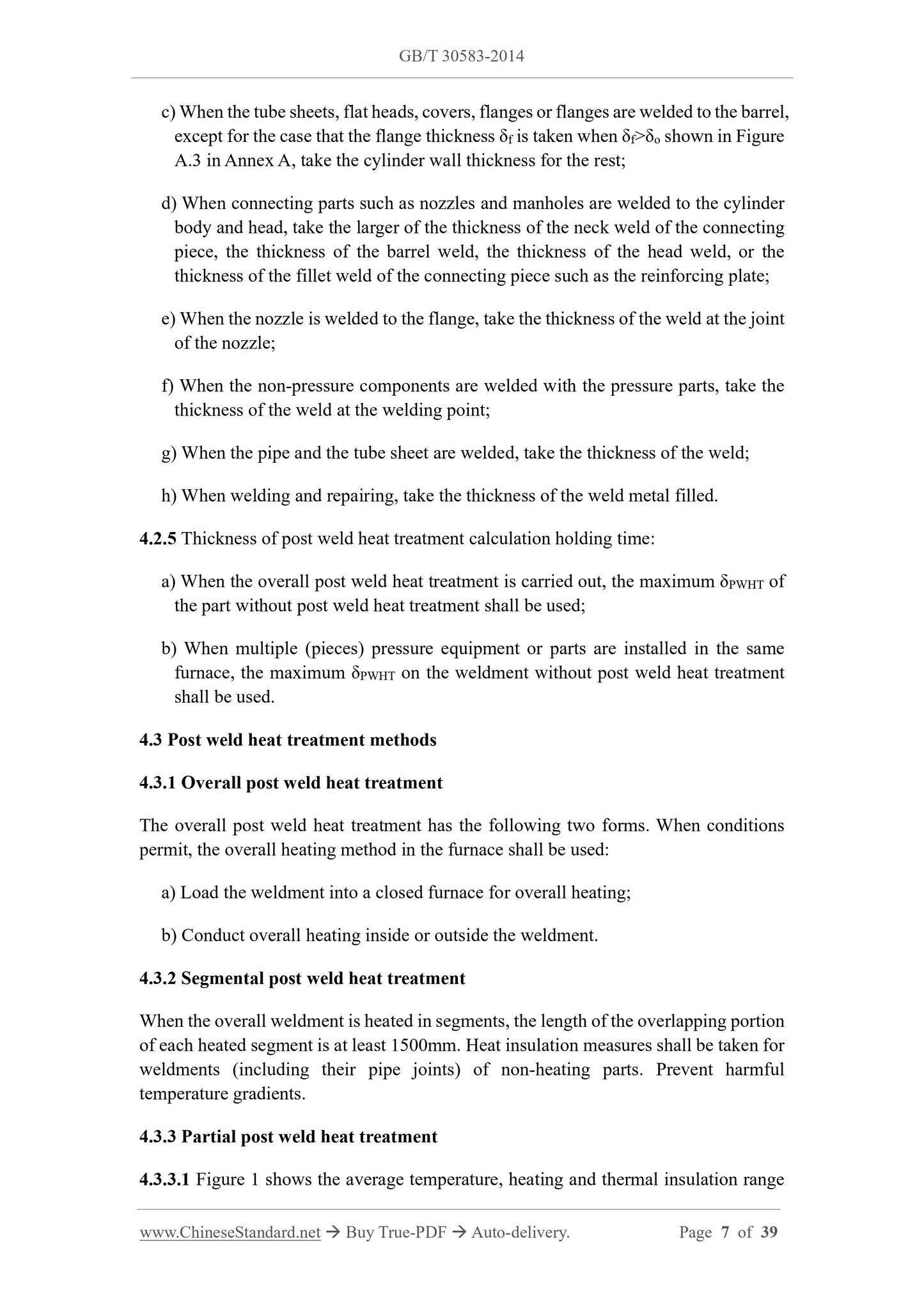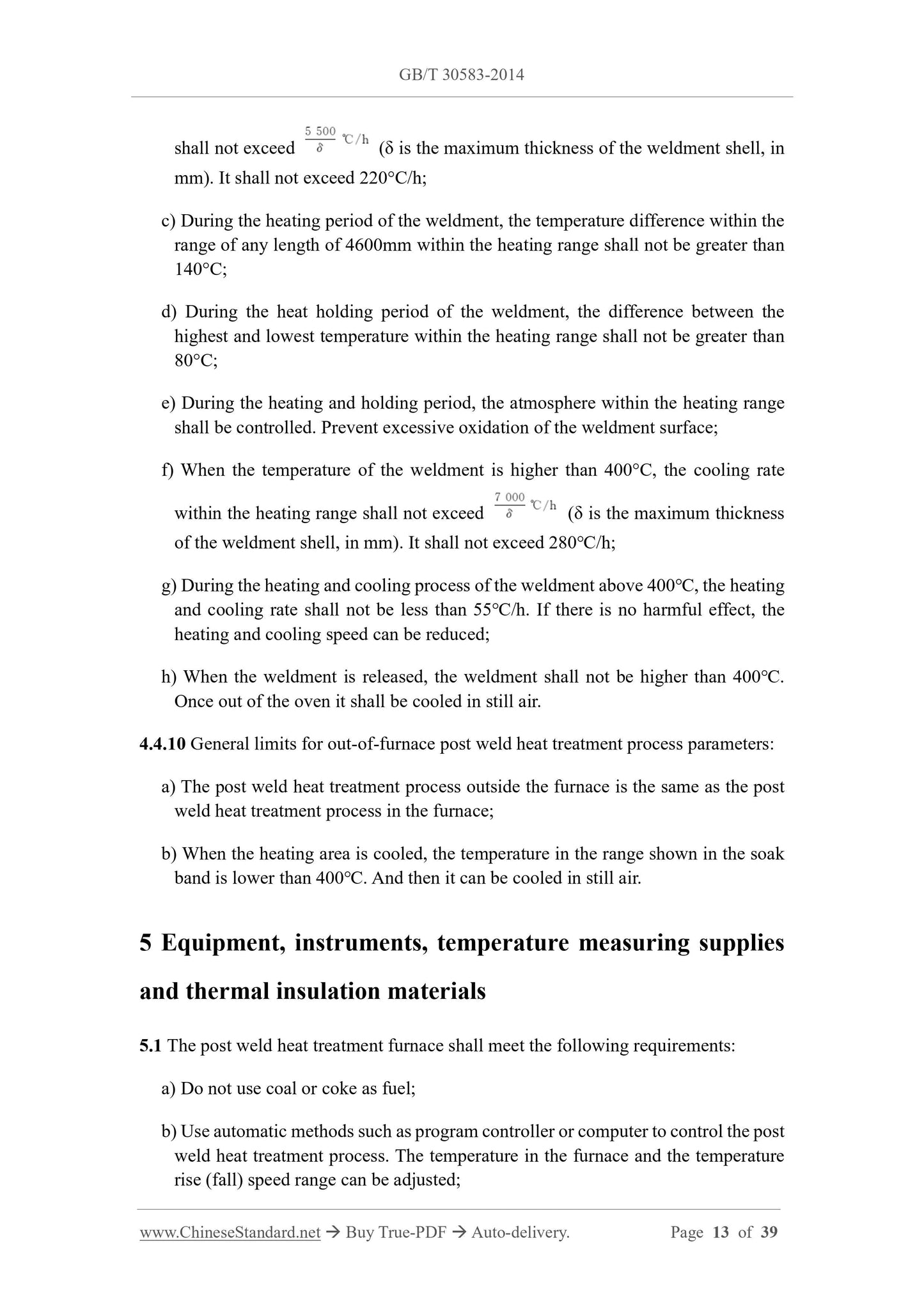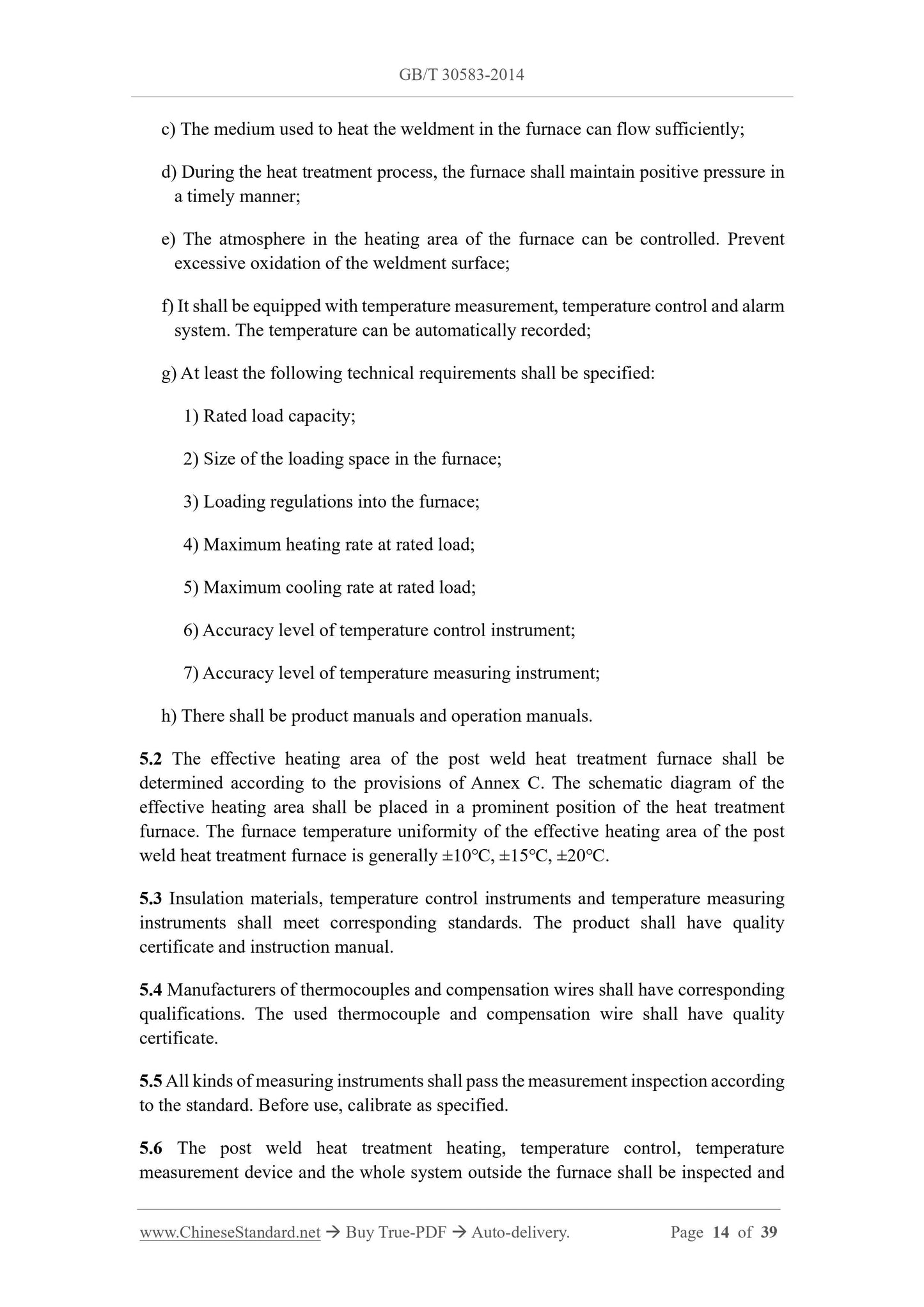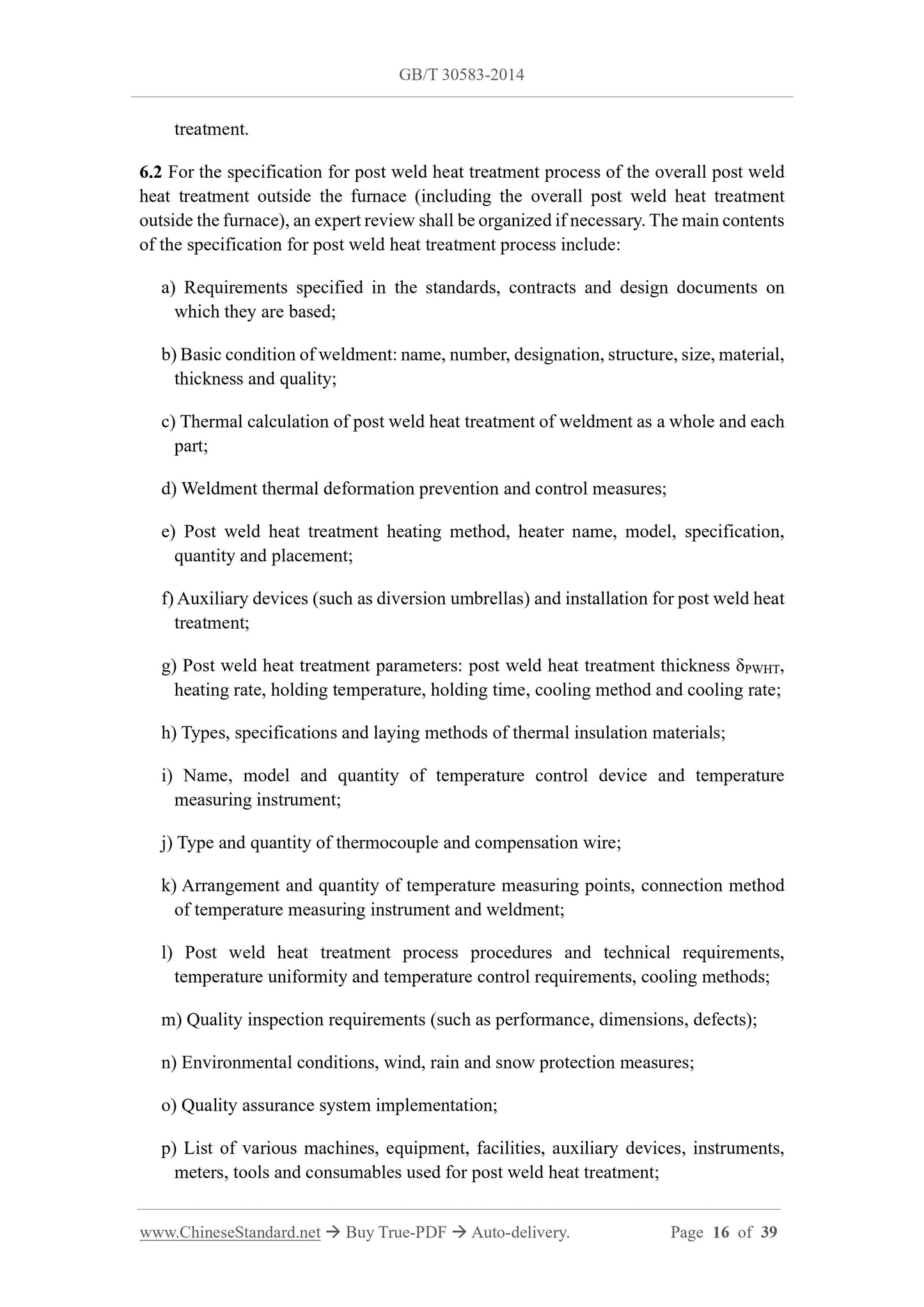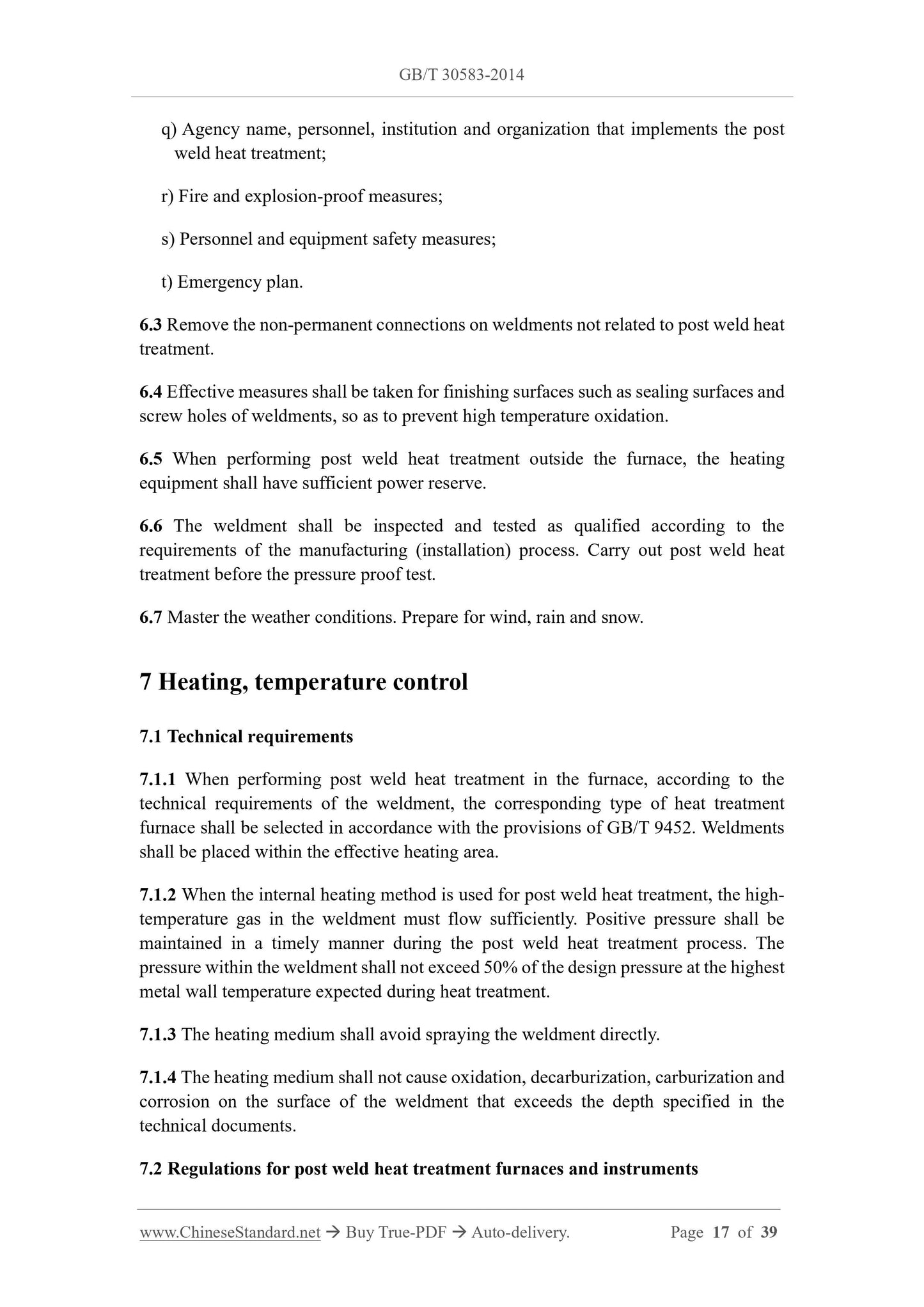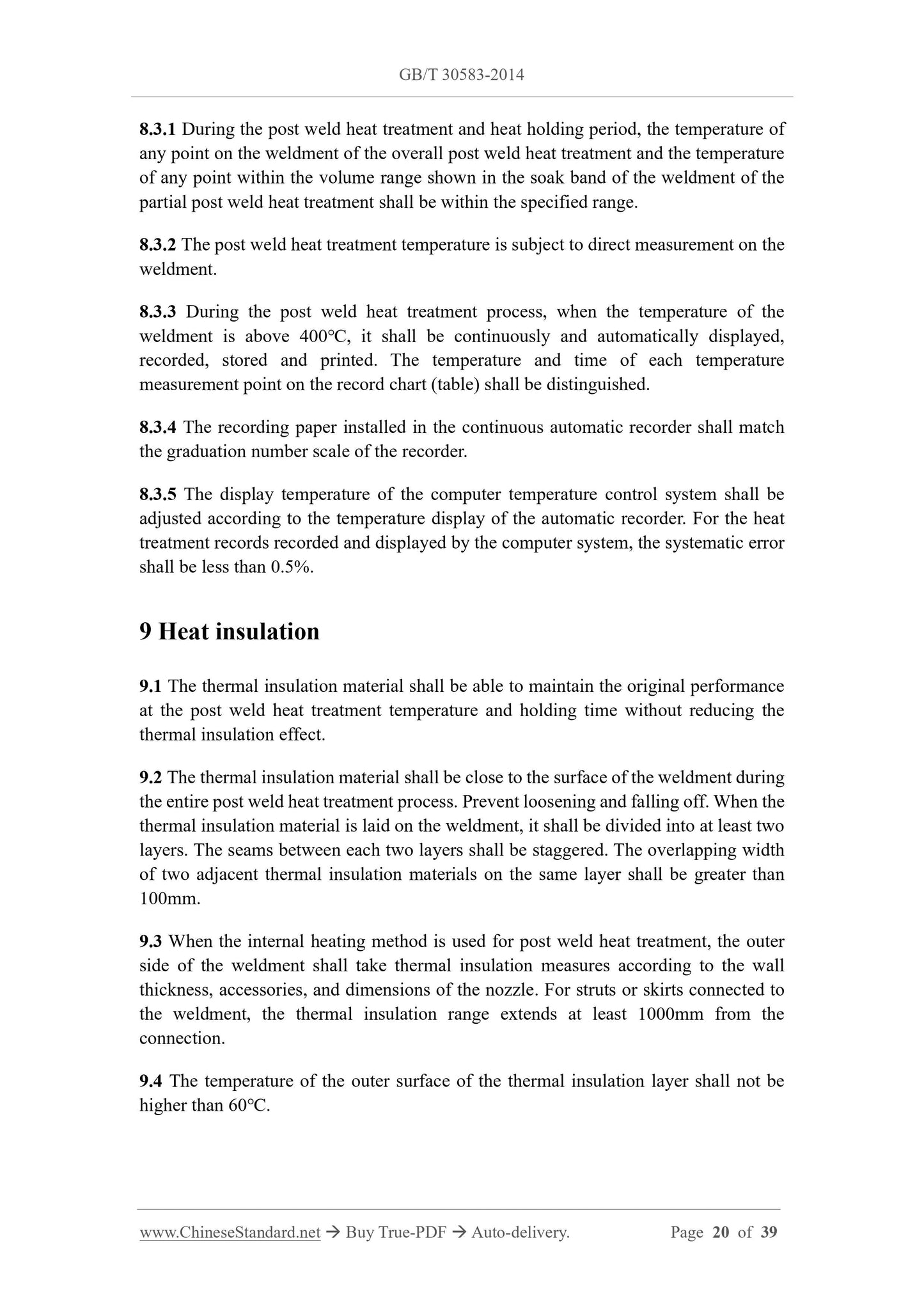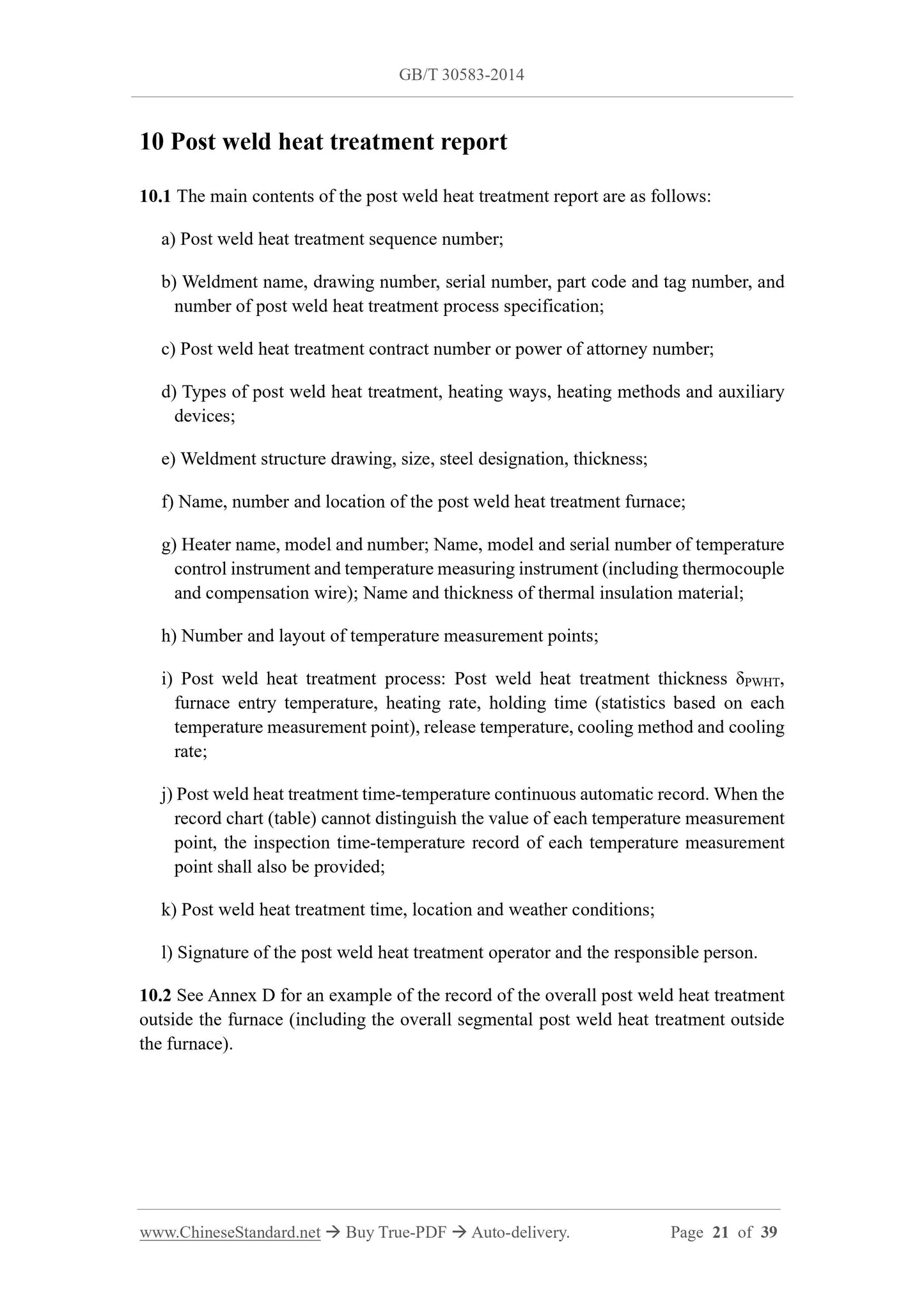1
/
of
12
www.ChineseStandard.us -- Field Test Asia Pte. Ltd.
GB/T 30583-2014 English PDF (GB/T30583-2014)
GB/T 30583-2014 English PDF (GB/T30583-2014)
Regular price
$485.00
Regular price
Sale price
$485.00
Unit price
/
per
Shipping calculated at checkout.
Couldn't load pickup availability
GB/T 30583-2014: Specification for post weld heat treatment of pressure equipment
Delivery: 9 seconds. Download (and Email) true-PDF + Invoice.Get Quotation: Click GB/T 30583-2014 (Self-service in 1-minute)
Newer / historical versions: GB/T 30583-2014
Preview True-PDF
Scope
This document specifies general basic technical requirements for post weld heattreatment of steel pressure equipment.
This document applies to post weld heat treatment of boilers and pressure vessels
(excluding gas cylinders).
Basic Data
| Standard ID | GB/T 30583-2014 (GB/T30583-2014) |
| Description (Translated English) | Specification for post weld heat treatment of pressure equipment |
| Sector / Industry | National Standard (Recommended) |
| Classification of Chinese Standard | J36 |
| Classification of International Standard | 25.200 |
| Word Count Estimation | 30,324 |
| Date of Issue | 5/6/2014 |
| Date of Implementation | 12/1/2014 |
| Quoted Standard | GB/T 3375; GB/T 9452; NB/T 47014 |
| Regulation (derived from) | National Standards Bulletin No. 9 2014 |
| Issuing agency(ies) | General Administration of Quality Supervision, Inspection and Quarantine of the People's Republic of China, Standardization Administration of the People's Republic of China |
| Summary | This Standard specifies the device-weld heat treatment of steel bearing universal basic technical requirements. This Standard applies to boilers, pressure vessels after (excluding cylinder) weld heat treatment. |
Share
